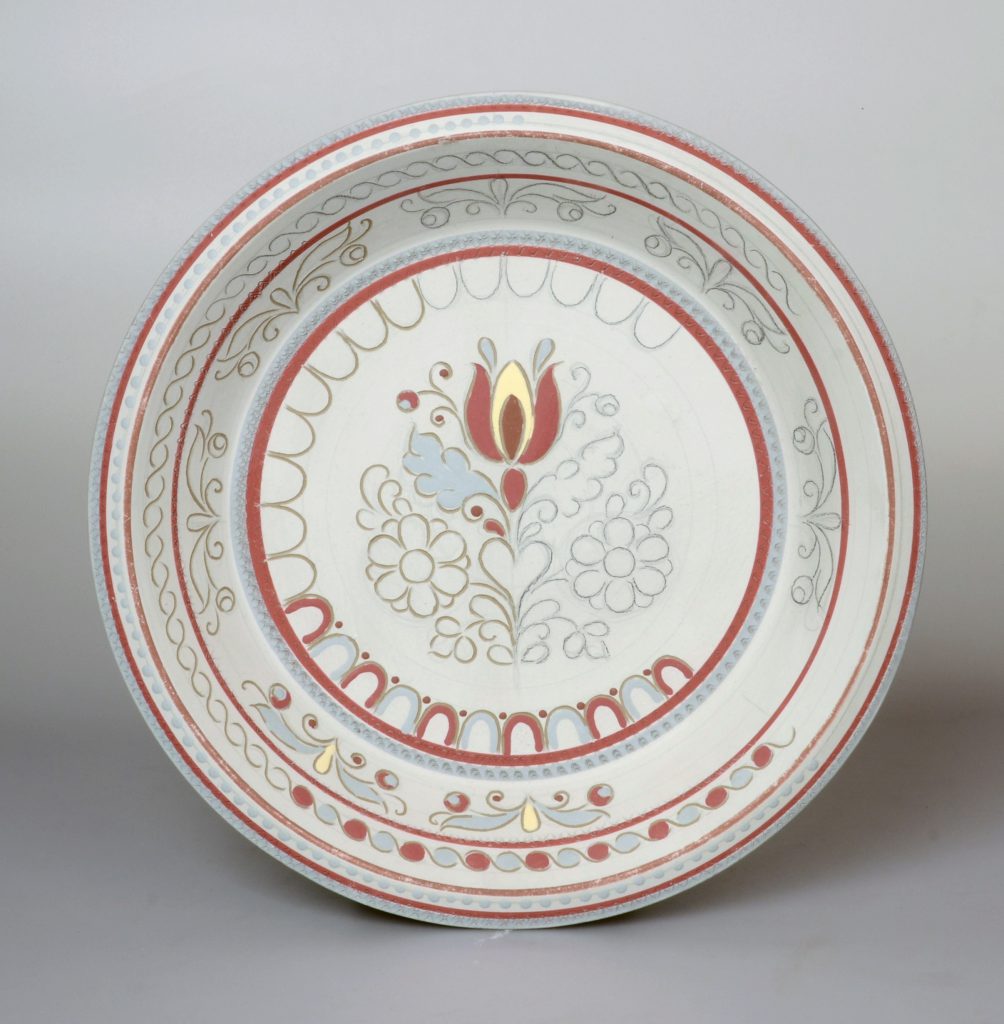
Greenware plate with the “Alt-Langnau” pattern. The slip coating has been added and the pattern outlined in pencil; some sections of the decoration have been incised and painted while others have not.
The shaped vessels are usually left to dry for some time before they can be further processed (trimmed, handles or spouts added, decorated, slipped, glazed). They are generally leather-hard before any glaze is applied. Such unfired vessels or stove tiles are known as “greenware”. Broken or defective pieces rarely survive because the clay is usually reused. Occasionally, greenware is found in archaeological excavations (e.g. in Zug, Oberaltstadt 3/4; Winterthur, Marktgasse 60) where it serves as direct evidence of the existence of a potter’s workshop.
In tile-yards, unfired mudbricks or roof tiles are also known as greenware.
Translation Sandy Haemmerle
German: Grünling
French: Cuir décoré, pâte à consistance cuir, consistance cuir, pâte verte, pâte séchée
References:
Blondel 2001
Nicole Blondel, Céramique, vocabulaire technique, Paris 2014, 159.
Roth Heege/Thierrin-Michael 2016
Eva Roth Heege/Gisela Thierrin-Michael, Oberaltstadt 3/4, eine Töpferei des 16. Jahrhunderts und die Geschichte der Häuser, in: Eva Roth Heege, Archäologie der Stadt Zug, Band 2 (Kunstgeschichte und Archäologie im Kanton Zug 8.2), Zug 2016, 10-154.
Tiziani/Wild 1998
Andrea Tiziani/Werner Wild, Die frühneuzeitliche Hafnerei der Familie Pfau an der Marktgasse 60 in Winterthur, in: Archäologie im Kanton Zürich 1995-1996. Berichte der Kantonsarchäologie Zürich 14, 1998, 225-264.

